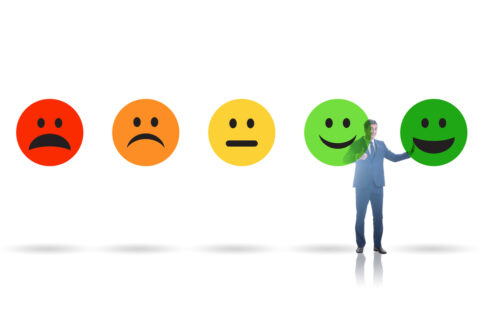Sustainability in Change: How Solution-Focused Therapy Creates Lasting Transformation

Sustainability in Change: How Solution-Focused Therapy Creates Lasting Transformation
Change is easy. Sustaining it is the real challenge.
Too often, people make breakthroughs in therapy only to find themselves back in old patterns when the sessions end. Traditional therapy models can create dependency on the therapist, making clients feel they need constant guidance to maintain progress. But what if change could be self-sustaining? What if therapy didn’t just help people temporarily but equipped them with the mindset, strategies, and confidence to thrive long after the sessions were over?
This is the power of Solution-Focused Therapy (SFT).
SFT doesn’t just help people change—it helps them own their transformation. It fosters sustainability by reinforcing self-efficacy, strengths, and solution-oriented thinking, so that growth continues long after therapy ends.
This article explores how and why Solution-Focused Therapy creates lasting, sustainable change.
The Core of Sustainability: Empowering the Client
Most traditional therapy models operate under an expert-driven approach: The therapist analyzes the problem, offers insights, and helps the client work through deep-seated issues. While this can be valuable, it often creates a hierarchical relationship where the client depends on the therapist for breakthroughs.
SFT flips this script.
Instead of positioning the therapist as the problem-solver, SFT treats the client as the expert of their own life. The therapist’s role is to ask the right questions, highlight the client’s strengths, and help them recognize their own ability to generate solutions.[1]
By shifting the focus from external guidance to internal capability, SFT ensures that the client walks away not just with progress, but with the skills to sustain it independently.[2]
Five Key Ways Solution-Focused Therapy Fosters Sustainability
- It Builds a Strength-Based Identity
Many people who struggle with problems define themselves by their challenges:
- “I’ve always been anxious.”
- “I’m not good at handling stress.”
- “I never follow through on goals.”
These identity-based beliefs create self-fulfilling cycles, where people revert to their struggles because that’s what they believe about themselves. SFT interrupts this cycle by focusing on moments of strength, success, and resilience[3]—no matter how small.
- “Tell me about a time when you handled stress well.”
- “What’s something you’ve accomplished that you’re proud of?”
- “What strengths helped you get through a difficult time?”
By reinforcing a strength-based identity, SFT helps people see themselves as capable, resourceful, and resilient. When people start believing in their ability to overcome challenges, they sustain change without needing external validation.
- It Develops a Future-Oriented Mindset
SFT doesn’t dwell on the past—it builds a compelling vision of the future.
Instead of asking, “Why are things like this?” SFT asks:
- “What do you want instead?”
- “What would your ideal future look like?”
- “What’s one small step you can take today to get there?”
This shift is powerful. When people are future-focused[4], they begin to see problems as temporary obstacles rather than permanent barriers. They develop a goal-oriented mindset, which keeps them moving forward long after therapy ends.
SFT’s famous Miracle Question illustrates this beautifully:
“Imagine that tonight, while you sleep, a miracle happens, and your goals have been achieved. When you wake up, what’s the first small sign that tells you things are different?”
This question doesn’t just create insight—it creates momentum. It helps people envision success and take action toward it, making long-term change natural and sustainable.
- It Focuses on Small, Incremental Progress
One of the biggest reasons change doesn’t last is because people set unrealistic goals. They aim for huge, dramatic transformations and then feel discouraged when they can’t maintain them.
SFT takes the opposite approach – Small changes create big impact.
Instead of asking clients to make huge leaps, SFT helps them identify tiny, manageable steps that move them forward.
- “On a scale of 1 to 10, how confident are you about making this change?”
- “What would help you move just one step higher on that scale?”
By focusing on incremental progress[5], SFT makes change less overwhelming and more sustainable. When people see small wins, they gain confidence and motivation, making it easier to keep going over the long term.
- It Encourages Self-Reflection and Solution-Seeking Thinking
SFT teaches people to ask solution-focused questions in their daily lives.
Instead of thinking:
- “Why do I always struggle with this?”
- “Why can’t I ever get this right?”
SFT-trained individuals start asking:
- “What has helped me succeed in the past?”
- “What’s one small step I can take right now?”
- “What resources do I have that I haven’t used yet?”
This shift in thinking rewires the brain for resilience and adaptability. Instead of getting stuck in problem-focused loops, people develop an automatic habit of seeking solutions[6]—a mindset that lasts long after therapy ends.
- It Reinforces Self-Efficacy and Autonomy
True sustainability happens when people believe: “I don’t need someone else to solve my problems—I have the tools to do it myself.”
SFT fosters self-efficacy[7] by ensuring that every insight, every solution, and every strategy comes from the client, not the therapist. By the end of SFT, clients walk away not just with a sense of progress, but with a toolbox of strategies they can use for the rest of their lives.
They learn:
- How to identify and build on their strengths
- How to set achievable, future-oriented goals
- How to take small, manageable steps toward change
- How to ask themselves the right questions when challenges arise
This sense of autonomy ensures that their growth is not dependent on therapy—it is self-sustaining.
Why Solution-Focused Therapy is the Ultimate Model for Sustainable Change
- Unlike many therapy models that create dependency, SFT creates independence.
- Unlike models that focus on fixing weaknesses, SFT focuses on expanding strengths.
- Unlike approaches that get lost in problem analysis, SFT moves quickly toward action and progress.
Because of these core principles, SFT doesn’t just help people change—it helps them sustain their change, no matter what life throws at them.
“You already have the solutions within you. Let’s uncover them together.”
This is the heart of Solution-Focused Therapy. And this is why its impact lasts a lifetime.
Would you like to integrate these powerful tools into your practice? Join us for the Solution-Focused Brief Therapy Virtual Conference on April 11, 2024, from 9 am to 1 pm (ET), where we’ll explore Solution-Focused Brief Therapy and its transformative tools. Register HERE.
[1] Zotova, Olga. “Solution Focused embodiment practice for empowerment.” Women’s Perspectives on the Solution Focused Approach. Routledge 105-116.
[2] Richter, Katrin A. “How clients and solution focused therapists co-construct new meanings when having conversations about’What’s better?’.” (2015).
[3] Chapin, Rosemary, Holly Nelson-Becker, and Kelly MacMillan. “Strengths-based and solutions-focused approaches to practice.” Handbook of social work in health and aging (2006): 789-796.
[4] Kim, Johnny S., and Cynthia Franklin. “Goal formulation and preferred future.” (2025).
[5] Hartwig, Elizabeth Kjellstrand, and Elizabeth R. Taylor. “Small steps can lead to big changes: Goal setting in schools using solution-focused play therapy.” International Journal of Play Therapy 31.3 (2022): 131.
[6] Gynnild, Astrid. “The strength of a solution seeking approach.” Grounded Theory Review: An International Journal 13.2 (2014).
[7] Kim, Hyun Mi. “The effect of the solution-focused group counseling program on the self-efficacy, self-esteem, depression, and hope of the homeless.” Journal of Korean Academy of Psychiatric and Mental Health Nursing 10.4 (2001): 629-644.








